Scavenging animals in Kenya are on high alert. What used to be a delicacy has recently become their death bed.
Wildlife poisoning has emerged as one of the major threats affecting our wildlife populations in Kenya. Aggrieved persons have resorted to using poisonous chemicals in retaliation for human-wildlife conflict cases, for example, lemme take you back to December 2015 when two Lions from the famous Marsh Pride and 15 White-Backed vultures were poisoned alongside other species in the Maasai Mara ecosystem as a result of retaliatory killing due to conflict.
Wildlife poisoning is a silent killer that indiscriminately kills large numbers of animals and is harmful to human and ecological health. A poison is any substance that can cause severe organ damage or death if ingested, breathed in or absorbed through the skin. The use of poison to kill wildlife is silent, cheap and easy and has, therefore, become a common method used in the illegal control of damage-causing animals, harvesting fish and bushmeat, harvesting animals for belief-based uses, poaching for wildlife products, and killing of wildlife sentinels.
Poisoning of birds, including migratory species, occurs year-round in Kenya’s rice schemes and in other water bodies. Fish are also harvested using poisons and both poisoned fish and birds make their way to local markets where they are often sold to unsuspecting customers with potentially grave impacts for human health.
The Wildlife Conservation and Management Act 2013, has identified wildlife poisoning as one of the major wildlife crimes that is punishable by law. Poisoning has had a profound negative effect on our carnivores: lions, hyenas, leopards, cheetahs, and wild dogs, and on birds of prey: vultures, eagles and other scavengers. Aquatic species including fish have also been affected due to water pollution with poisonous chemicals.
Common Chemicals Used to Poison Wildlife in Kenya
There are a number of toxic chemicals such as agro-chemicals, plant-based extracts and heavy metals which have been used in the illegal poisoning of wildlife in Kenya. Over the last 8 years, the majority of poisoning incidents have been carried out using agro-chemicals which can be broadly classified as pesticides, herbicides, fungicides, acaricides. The most commonly used pesticides are organophosphates, pyrethroids and carbamates.
During the period between 2009 and 2017, some of the wildlife poisoning incidents and chemical compounds identified are summarized below.
| Year | Month | Species affected | Number affected | Chemical (Compound identified) | Location | County |
| 2009 | Apr | Lion | 1 | Carbamate | Maasai Mara | Narok |
| 2009 | Apr | Vultures | 40 | Carbamate | Maasai Mara | Narok |
| 2010 | Vultures | 20 | Amitraz (Acaricide) | Maasai Mara | Narok | |
| 2011 | Feb | Fish | Mass die off | Pyrethroid | Maasai Mara | Narok |
| 2011 | Elephant | 1 | Ouabain (Plant extract) | Siyapei | Narok | |
| 2014 | Lions | 5 | Carbamate | Ngurumani | Kajiado | |
| 2015 | July | Lions | 1 | Carbamate | Laikipia | |
| 2015 | Nov | Lions | 2 | Carbamate | Maasai Mara | Narok |
| 2015 | Nov | Vultures | 15 | Carbamate | Maasai Mara | Narok |
| 2016 | Feb | Elephants | 2 | Carbamate | Maasai Mara | Narok |
| 2016 | Elephant | 1 | Ouabain (Plant extract) | Tsavo | Taita Taveta | |
| 2017 | May | Elephants | 2 | Pyrethroid | Ngurumani | kajiado |
Table1; Summary of chemical compounds, wildlife species affected, location and year (KWS 2017)
Some of the clinical symptoms to look for in Suspected Poisoned Animal
Clinical symptoms of poisoned animals Generally, animals display similar symptoms of poisoning depending on their taxa. Poisoned mammals may exhibit one or more of the following symptoms:
- Loss of appetite
- Paralysis
- Muscle spasm
- Vomiting
- Severe dehydration
- Drooling of saliva/ hyper-salivation
- Increased tearing/ hyper-lacrimation
- Lethargy
- Disorientation
- Convulsions
- Seizures
- Coma
- Death
Poisoned bird species may exhibit one or more of the following symptoms:
- Unable to fly
- Paralysis
- Convulsions
- Drooping wings
- Blood in the droppings
- Skin irritation
- Drooping dead
- Mass-die-offs
Poisoning of animals around Mara ecosystem is on the rise and drastic measures need to be put in place to curb the menace. On 22nd November a concerned friend of mine who runs a tour firm www.namnyaksafaris.com sent me the photo and video of a tawny eagle which evidently was poisoned, this was at Oloolaimutia and I advised him to report the incidence to the local authority which he had already done.
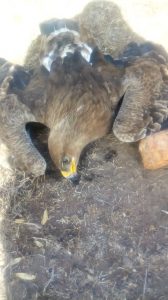
Credit www.namyaksafaris.com
All wildlife poisoning cases requiring treatment should be handled by qualified veterinarians registered by KWS
If you ever come across Poisoning cases that require rehabilitation in Kenya are to be referred to KWS Nairobi Animal orphanage or to KWS approved orphanages some of which are listed below among others;
Nairobi Animal Orphanage
Tel: 020 2379407, 020 6002345, 020-2379408, 020-2379409, 020-2379410, 020-2379411, 020-2379412, 020-2379413, 020-2379414,
Call Center: 0800 597 000 or 0800 221 5566
David Sheldrick Wildlife Trust
Tel: 0202 301396, 0733 891996
Raptor Rehabilitation Center Karen, Nairobi
Tel: +254721969640/ 0723829529
For further reading refer to Response Protocol to Wildlife Poisoning Incidents in Kenya February 2018
“For most of history, man has had to fight nature to survive. In this century he has to realize that in order to survive he has to protect it.” Jacques-Yves Cousteau Here we celebrate the unsung wildlife heroes in the grassroots doing remarkable work to conserve our wildlife heritage, Get to learn about wildlife from a ranger/ ecologist in Kenya a freelance eco-traveler, experience the diverse cultures and African heritage from the natives and take an adventure to new destinations to learn about rare attractions that are hardly talked about and to top it all up some of the best wildlife photographs that will make you reconnect to your wild side appreciate everything around us and fall in love with the natural world, because “It is not enough to love the natural world; the point is to defend and preserve it.” Edward Abbey
Our wildlife, our responsibility. When it comes to standing up for our wildlife it’s better to be outspoken than unspoken.
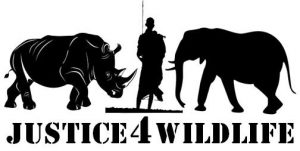
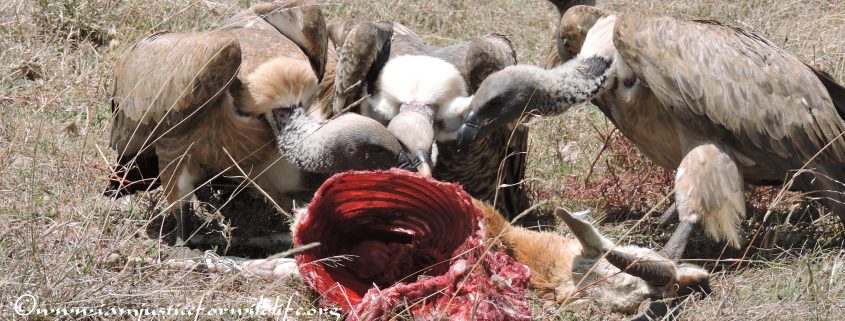



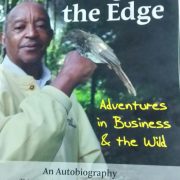
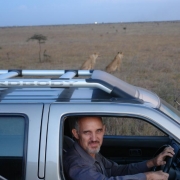 @Gareth Jones
@Gareth Jones 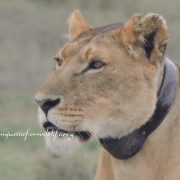



serious action should be taken on this
The society that leave along the border of wildlife corridor’s needed to be educated on the importance of wildlife since a lot of wildlife species are in risk ,in this regards the government need to share the decision making and also profit accrued from wildlife.
Hey there! Do you know if they make any plugins to help with Search Engine Optimization? I’m trying to get my blog to rank for some targeted keywords but I’m not seeing very good gains. If you know of any please share. Cheers!
I don’t know of any at the moment but will look into it
This is actually useful, thanks.
It works very well for me
Thanks Kristeen
Thanks for the terrific article
Thanks, it is quite informative
It works very well for me
I like the report
Thank you for the excellent article
It works very well for me
This is really useful, thanks.
Thanks, it’s very informative
I just want to mention I am just new to weblog and certainly loved you’re blog site. Likely I’m likely to bookmark your blog . You really have outstanding articles. Bless you for sharing your webpage.
Thank you for your review and genuine remarks
This is really useful, thanks.
I like what you guys are up too. Such smart work and reporting! Carry on the excellent works guys I’ve incorporated you guys to my blogroll. I think it’ll improve the value of my site :).
I think other website owners should take this site as an model, very clean and excellent user friendly pattern.
I am often to blogging and i really appreciate your content. The article has really peaks my interest. I am going to bookmark your site and keep checking for new information.
Some really fantastic info , Sword lily I found this. “The basis of a democratic state is liberty.” by Aristotle.
Hey I am so thrilled I found your site, I really found you by error, while I was browsing on Aol for something else, Anyways I am here now and would just like to say many thanks for a marvelous post and a all round thrilling blog (I also love the theme/design), I don’t have time to read through it all at the minute but I have saved it and also included your RSS feeds, so when I have time I will be back to read much more, Please do keep up the superb work.
It’s arduous to seek out knowledgeable individuals on this matter, but you sound like you understand what you’re speaking about! Thanks